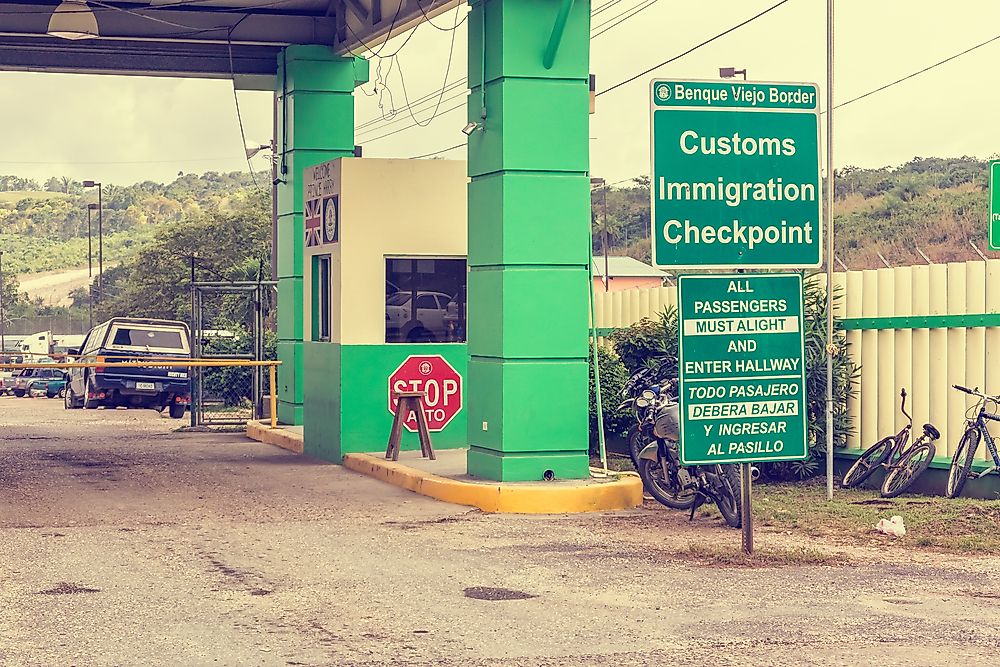Which Countries Border Guatemala?

The Republic of Guatemala is an independent country situated in Central America. The nation occupies an area of 42,042 square miles. Its land area is 41,374 square miles while the maritime area is 667.9 square miles. It is Central America’s most populous state with an estimated population of 17 million residents. In the early 19th century, Guatemala was part of the Federal Republic of Central America. The federation split up in 1841 to form several nations namely; Costa Rica, El Salvador, Nicaragua, Honduras, and Guatemala. Today, the Central American nation of Guatemala shares its border with some of these same nations, namely the four nations of Mexico, Honduras, El Salvador, and Belize.
Bordering Nations of Guatemala
Guatemala is strategically situated in the central region of Central America. It plays a key role in the region due to its central location. Through the Central American Free Trade Agreement, Guatemala’s open borders and central location allow Central American nations to freely transact. The nation’s border is marked by natural features such as rivers and mountain ranges. In some densely populated regions along the nation’s border, they have fences to prevent illegal immigration to neighboring states. The areas close to Guatemalan borders experience high rates of crime. The lack of strict law enforcement around the borders has led to the growth in crimes. The Central American region, particularly the Guatemalan border area, is listed as among the world’s most dangerous places.
Guatemala-Mexico Border
Guatemala and Mexico share an extensive border that runs from the western region to the northern region of Guatemala. The international border between the two countries is 541 miles long. It is Guatemala’s longest border with another nation. Some of the administrative units along the border in Guatemala include El Quiché, San Marcos, El Petén, and Huehuetenango. Some parts of the border are fenced while natural features such as rivers mark others. Official border posts that allow people’s movement between the two countries are scattered along the border. The Guatemala-Mexico border is crucial in the region as it allows for trade between the two nations and trade with other Central American nations. Nonetheless, the border has also been a source of conflict between Guatemala and Mexico. Guatemalan citizens are often accused of illegally crossing into Mexico through the Guatemala–Mexico border. Criminals often use the border to smuggle weapons and drugs between Mexico and Guatemala. Recently, thousands of immigrants attempting to get to the United States were denied entry into Mexico at the border with Guatemala.
Guatemala-Belize Border
The border between Guatemala and Belize appears as a straight line. It separates the eastern region of Guatemala from the western region of Belize. The Guatemala-Belize border is 165 miles long, and it is the second longest border in Guatemala. Since the 18th century, Guatemala and Belize have been in serious conflict over the border between the two nations. Guatemala claims to own as much as 4,247 square miles of territory situated in Belize. The two countries in Central America have remained in disagreement over the Guatemala-Belize border. In April 2018, Guatemala voted to have the International Court of Justice resolve the dispute with Belize. Belize will also hold a referendum to determine the way forward. Guatemala and Belize share important infrastructure close to the border area. One major highway passes through the Guatemala-Belize border and links the two nations.
Guatemala-Honduras Border
The Guatemala-Honduras border is the third longest border in Guatemala. It links the eastern part of Guatemala and the northwestern part of Honduras. The border stretches for 164 miles. The border region is listed as the most dangerous regions in Central America. The area is said to have the leading murder rate in the entire world. The region is known for mega-crimes such as drug trafficking, human trafficking, violence, and murders. Lack of effective law enforcement has enabled criminals to thrive in the region. As a result, the Guatemala-Honduras border has accelerated crime rates in the whole of the Central American region. The Central American states have stepped up their efforts in fighting against drug traffickers, human traffickers, and other organized criminals. The two nations have increased troops in their respective border areas as well as official border cross points. These steps will ensure safety in the entire Central American region.
Guatemala-El Salvador Border
Guatemala’s border with El Salvador is found on the southeastern region of Guatemala. As El Salvador is Central America’s tiniest nation, its border with Guatemala is only 142 miles long. The municipality of Jutiapa in Guatemala lies along the Guatemala-El Salvador border. High crime rates around the Guatemala-El Salvador border has led to a decline in the region’s economy. As a result, many citizens in the country have migrated to neighboring states in search of better opportunities. The border point that connects Guatemala to El Salvador recently experienced an influx of immigrants attempting to move to the United States.
Importance of the Guatemalan Border in Central America
Before the 19th century, the Central American nations existed as one united nation referred to as the Federal Republic of Central America. In 1840, the federation split up to form the individual nations. Guatemala, which is situated in the middle area of Central America, is an important historical location which holds key sites from the past regimes. Guatemala’s bordering nations share the same historical past.
Additionally, Guatemala is economically important in the region. It provides a commercial link to most of the countries in Central America. The Central American Free Trade Agreement enables traders in the region to transport their goods through Guatemala with little or no restrictions. Guatemala’s southern border lies on the Pacific Ocean’s coast. The Pacific coast provides important ports for maritime transport and access to landlocked nations in the region.
Lastly, most Central American countries have robust tourism industries. The holidaymakers can visit different sites in different states in the region. Guatemala has several border crossing points where visitors easily move to diverse destinations.











